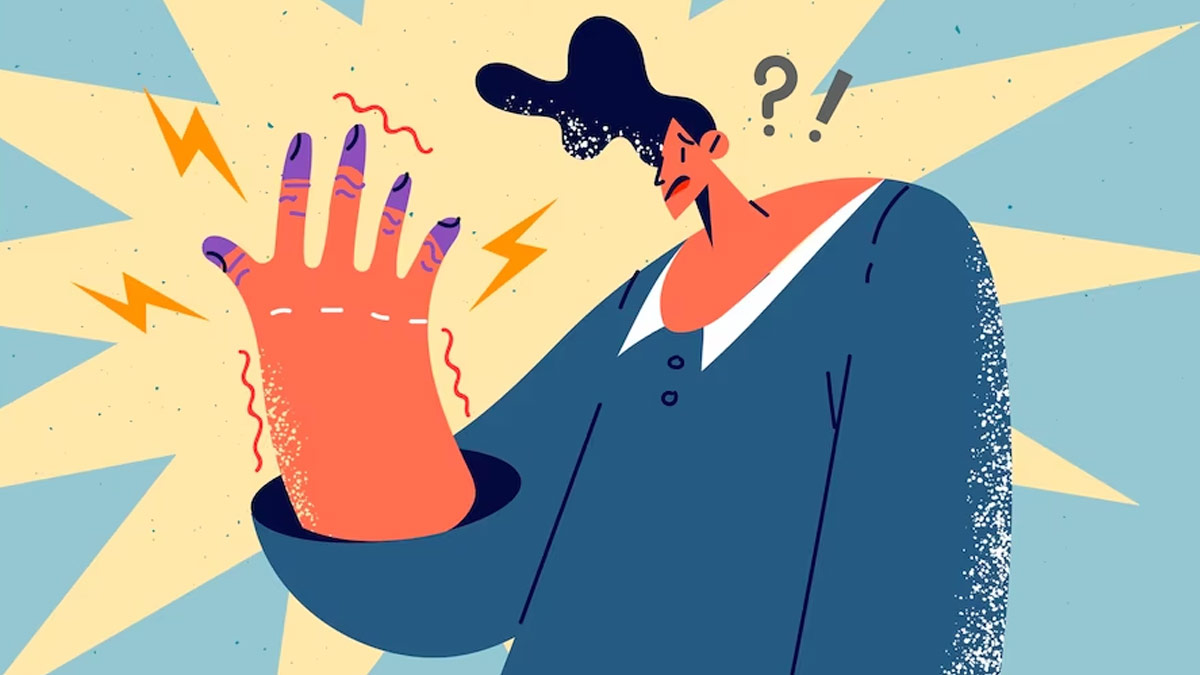
Imagine a world where every movement you make is accompanied by an uncontrollable and rhythmic shaking of your limbs. For those grappling with hyperkinetic movement disorders, this scenario is not a figment of their imagination but a daily reality. Tremor syndromes, a prominent facet of these disorders, present a perplexing challenge for both patients and healthcare professionals.
Table of Content:-
Tremors are not all the same; they come in various forms, each with its unique characteristics. Understanding these tremor types is the first step in comprehending hyperkinetic movement disorders. Dr Kandraju Sai Satish, Consultant Neurologist and Epileptologist, Yashoda Hospitals, Hyderabad, explains tremor syndromes in detail.
Understanding Tremor Syndromes
"Conditions characterised by involuntary, unnecessary movements of the body fall under the category of hyperkinetic movement disorders," stated Dr Satish. He added that among these disorders, tremor syndromes are a significant component.

Depending on when the tremor occurs, it can be classified as a rest tremor, action tremor, or postural tremor.
- Rest Tremor: A tremor observed only when the hand or leg is at rest is called a rest tremor.
- Action Tremor: When the tremor occurs while the limb is in motion during activities like withdrawing money from an ATM, writing, or cutting vegetables, it is referred to as an action tremor.
- Postural Tremor: If the tremor is noticed while holding the limb in a specific posture, such as holding a cup or a plate during a buffet, it is known as a postural tremor.
Also Read: Are Your Hands Shivering? Here Are 6 Exercises For Relief
Recognising Normal Tremors
"Tremors can be observed in all individuals to some extent, which is entirely normal and referred to as physiological tremors. However, in individuals with significant tremors, associated features or accompanying symptoms may point to a specific neurological condition," highlighted Dr Satish.
He added that it is important to note that tremors themselves do not typically cause major neurological issues and do not require immediate treatment. "Treatment for tremors is considered only if they interfere with daily activities or negatively affect one's social, personal, or professional life," he suggested.
Types of Tremor-Related Conditions

Common conditions where tremors are encountered include essential tremors, Parkinsonian tremors, and enhanced physiological tremors.
Enhanced Physiological Tremors
"As the name suggests, 'physiological tremor' is simply the normal tremor seen in individuals but with increased intensity or amplitude. Enhanced physiological tremor is observed in conditions like hyperthyroidism and anxiety," said Dr Satish.
Essential Tremors
Another common condition where tremors are observed is essential tremor. According to the Nature Journal's Scientific Reports essential tremor impacts nearly 0.3–0.9% of the global population, and its occurrence tends to rise as individuals grow older.
Dr Satish said that this type of tremor is commonly seen in both hands, as well as in the head, voice, and legs to some extent. Tremors in this condition are predominantly action and postural tremors, and they are never observed at rest. "This lack of rest tremor is an important feature that distinguishes it from Parkinsonian tremor," he highlighted.
Parkinsonian Tremors

"Parkinsonian tremor is characterised by a predominant rest tremor, but can also occur during action or while holding a limb in a certain posture," said Dr Satish. He added that alongside tremors, individuals with parkinsonism typically experience slowness in performing simple activities like eating, writing, and bathing, as well as slow walking and stiffness in all limbs.
Also Read: Parkinson’s Disease: Expert Explains Its Early Signs And Treatment Options
Distinguishing Between Tremor Types
"In the early stages, it can be challenging to differentiate between tremors caused by enhanced physiological tremor, essential tremor, or parkinsonism. However, the associated symptoms mentioned above can help distinguish them," suggested Dr Satish.
"In cases where differentiation remains difficult, a trial of medication (dopamine replacement therapy) can assist in distinguishing Parkinsonian tremor from essential tremor. Unlike essential tremor, Parkinsonian tremor responds well to dopamine replacement therapy, as it is often caused by dopamine deficiency in the midbrain. Imaging studies of the brain can differentiate individuals with essential tremors from those with parkinsonian tremors," said Dr Satish.
When Is Treatment Necessary?
Even when individuals are diagnosed with parkinsonism, treatment is not always necessary unless the tremor, rigidity, gait disturbances, or slowness in daily activities significantly impairs their daily efficiency.
[Disclaimer: This article is for informational purposes only. Consult your healthcare provider to get a thorough diagnosis and treatment as per your health needs.]
Image Credits: freepik
Also watch this video
How we keep this article up to date:
We work with experts and keep a close eye on the latest in health and wellness. Whenever there is a new research or helpful information, we update our articles with accurate and useful advice.
Current Version
